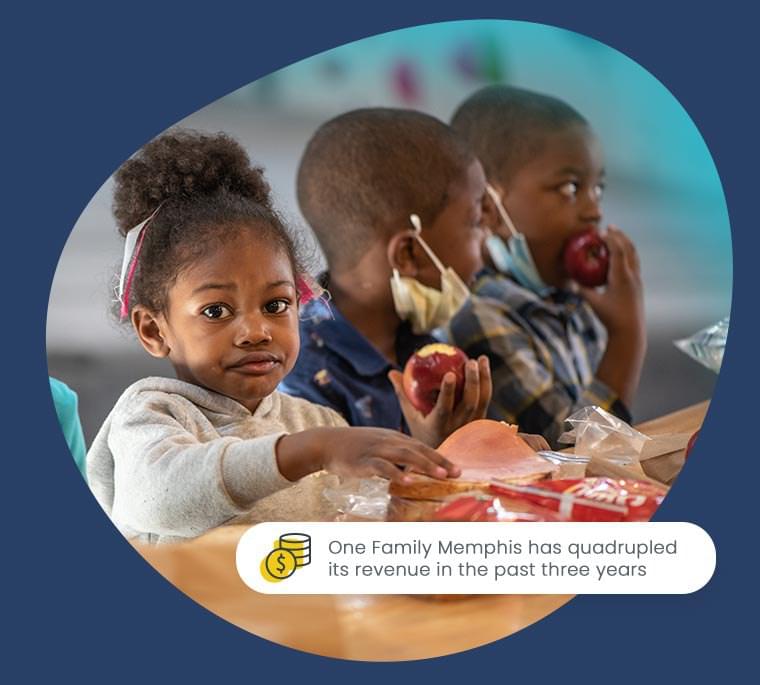Search for topics or resources
Enter your search below and hit enter or click the search icon.
Take charge of nonprofit events with this ultimate guide and comprehensive toolkit. You will be showered with creative ideas, OMG-worthy tips, and worksheets that walk you through the process, from planning to party to post-event tasks. We've got all you need to plan spectacular nonprofit events...in one place!

Events offer nonprofits an opportunity to engage donors, raise funds, and have a terrific time doing it. We've leaned on a lot of experience to bring our very best advice and tips to you.
When you’re ready to party with a purpose, you’re ready to plan some nonprofit events! Raising (and giving) money is more enjoyable when you gather supporters, board members, and community partners to have a great time while supporting a mission everyone cares about.
At CharityEngine, we’ve been both the nonprofit (remember that story?) and, more recently, the company with software that powers organizations like Wounded Warrior Project, Easterseals, and MD Anderson Cancer Center as they engage their donors and raise money. Our enterprise clients aren’t strangers to events, but some of our growing clients think that events are reserved for the big boys.
We’re here to tell you that any nonprofit – of any size, focused on any mission – can use events to rally supporters, engage and increase donors, and raise funds.
This guide pulls together all the advice we give our clients, whether they’re enterprise-level or just starting to think of how events can be part of their fundraising plan.

In it, you’ll learn:
And as a bonus, you can download our comprehensive Nonprofit Event Toolkit. It contains three different editable worksheets you can use as the foundation of your event planning, including:
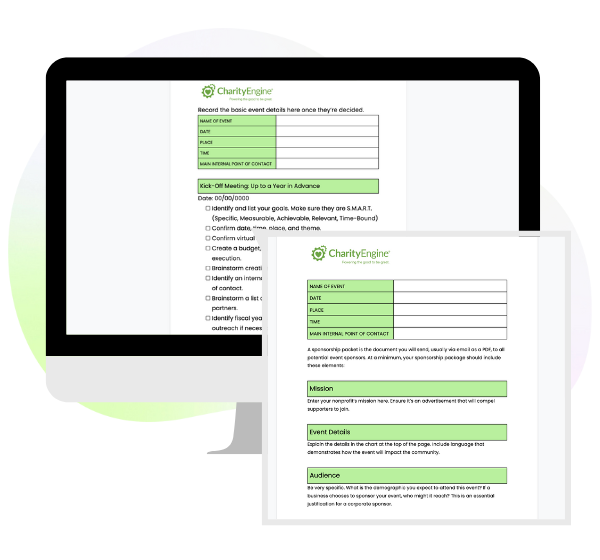
Between this guide and our hands-on toolkit, you'll have the best event guidance available.
Well, this could be an encyclopedia. It’s hard even to put your arms around nonprofit events because if we’re being literal, "events” encompasses everything from a bake sale to save sea turtles to a gala to raise funds for the American Red Cross.
For these purposes, we will focus on the types of events that our clients use often and successfully. This list isn’t, and can’t be, exhaustive because many of our clients run specific events that we can’t lump into a category. But we hope this smorgasbord of ideas offers you a plan or sparks a unique idea your nonprofit can use.
Some of the biggest nonprofits raise an incredible amount of money through galas. They often include silent auctions, and donors pay high ticket prices to come for dinner, drinks, and dancing.
We mention galas not because you need a tutorial on planning a party and not because a gala is a great idea for every nonprofit. We mention them so you can scale this idea to your size.
What do we mean? Throw the kind of party you can afford and sell tickets to it. You can rent out a school gym and serve huge pots of chili. You can ask individual donors to host dinners in their homes. You could ask a local band to play at a park (free publicity for them). In all these events, you will sell tickets, and the proceeds benefit your nonprofit. Gala is just a fancy word for party, and in this case, party is just a fancy word for fundraising.
We’ve learned that there’s nothing—even happy hours—that we can’t take virtual. While it isn’t the best forum for many things, there are actually times when virtual events are perfect.
When are they perfect? When you want to keep costs down, or your audience is widely spread out, or when you want supporters to move at their own pace (think a progressive series of presentations, like a Masterclass), virtual events are the perfect way to engage donors and raise funds.
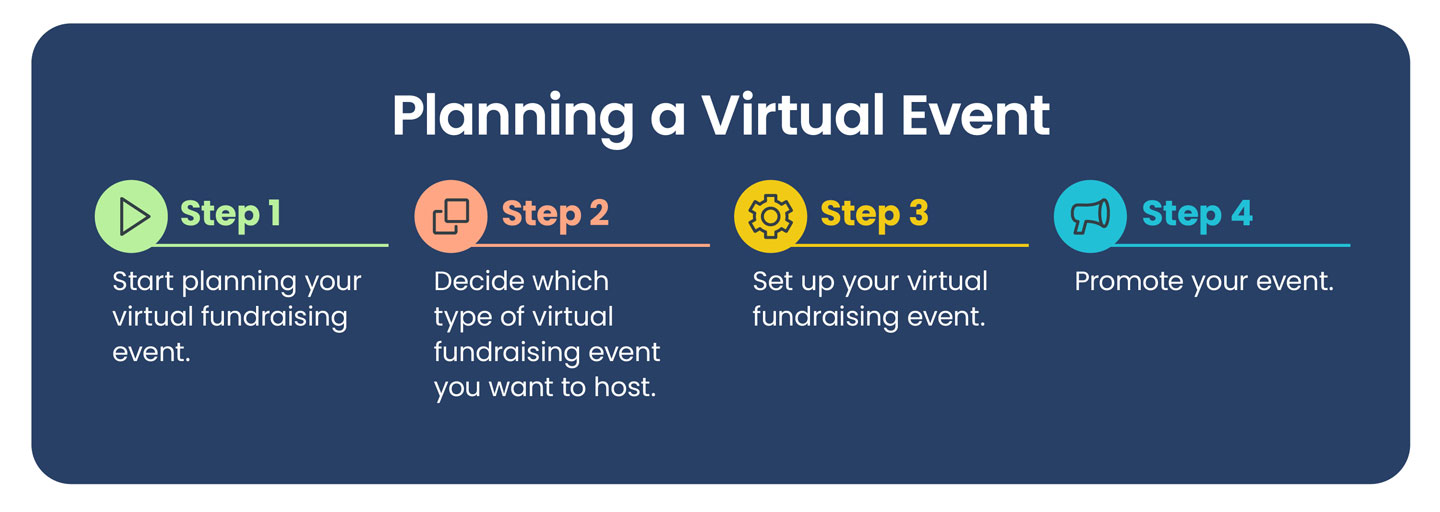
When planning a virtual event, we recommend the following steps:
Step 1: Start planning your virtual fundraising event.
It’s critical to start with a goal so you can easily measure success. Is your ultimate goal more money raised, more donors, or more community involvement? For many of our clients, setting dual goals (we will raise this much money and increase our donors by this percentage) gives them the most bang for their buck.
Step 2: Decide which type of virtual fundraising event you want to host.
Most virtual events fall into one of two categories: peer-to-peer and simulated attendance events. Peer-to-peer would be something like a social media campaign around an event in which supporters are showering social media with a link to your donation page. A simulated attendance event would be more like an online auction or a series of webinars, like a book club or instructional event.
CharityEngine client Phoenix Boys Choir executed a spectacular fundraising concert, all online! For either type, you will want to market the event well, streamline the signup, and rally your supporters.
Step 3: Set up your virtual fundraising event.
Before you get started, setting expectations is critical for virtual events. Make sure you walk through the participant journey: what actions will they take, and when? Do they have the tools and guidelines they need to manage the tasks? And don’t forget to include a phone number or live chat if someone needs help!
Here is a series of tasks that will help you make sure you’re remembering everything you need for a virtual event:
These steps take you from signup (oh, and make sure everything translates well to mobile) to prepping your website to sending the invites, testing the software, and thanking your supporters.
Step 4: Promote your event.
Because it’s a virtual event, your promo can be virtual, too. No need to rent out a billboard on the highway! Email will be your best friend, but segment your audience so they get the most appropriate message for their circumstances. Social media is terrific here, too, because you can create a funny hashtag and use it all over social media to gain some traction. And be a blabbermouth. Tell everyone you know!
Need some online fundraising event ideas?
We have a million, but here are five to consider:
Even if you don’t pencil in an online event for your next round of fundraising, keep these ideas in your pocket. They don’t cost much, they’re fairly easy to pull off, and they’re effective.
Peer-to-Peer events, or P2P because it’s faster to type, are the bread and butter of fundraising for many of our clients. This model of enlisting supporters to become fundraising ambassadors is the easiest way we know to engage donors and reach far more than you would otherwise.
There are a few different types of P2P campaigns we see:
And there are big benefits!
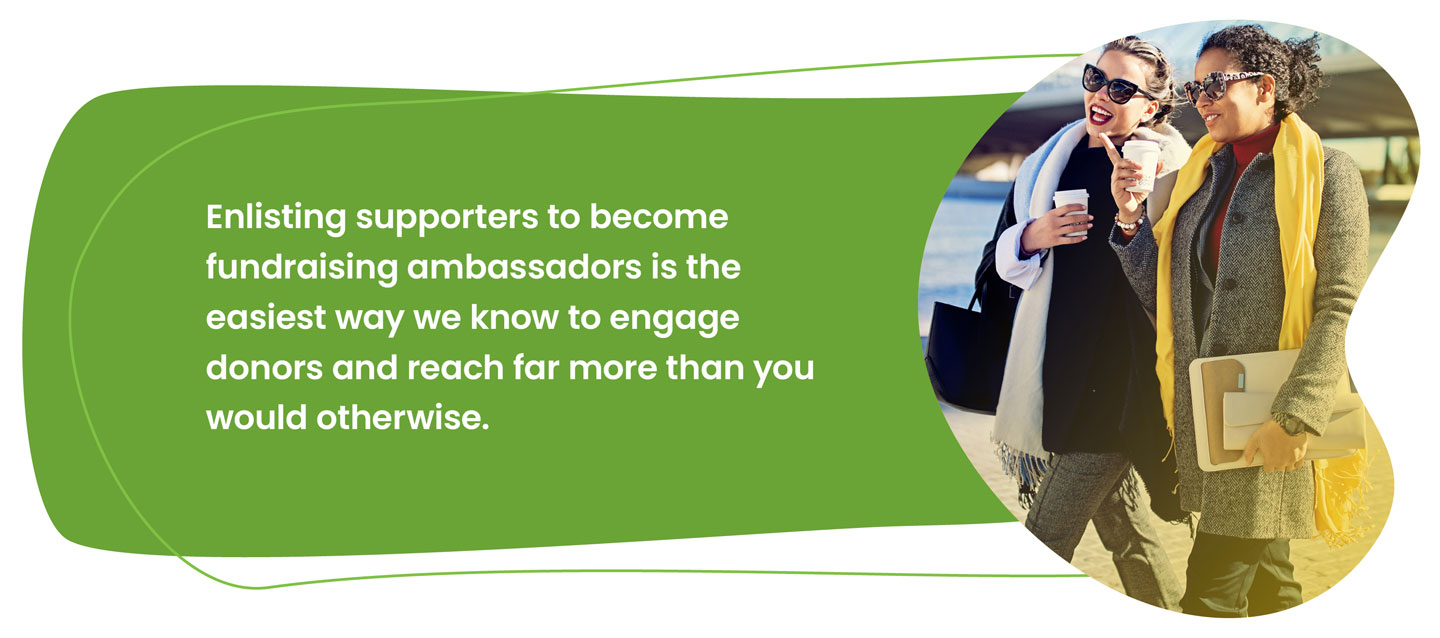
While P2P campaigns are scalable, flexible, and should be part of any nonprofit toolkit, some pitfalls can be easily avoided if you mitigate them ahead of time. These include a lack of control over your branding and messaging. When you dispatch hundreds of ambassadors, it’s tough to keep almost anything consistent!
The right technology can alleviate many of these challenges. With P2P-specific software, communication between teams and your organization is automatic and easy. You can even offer anonymous giving opportunities and incorporate goal thermometers. We would even say that a P2P campaign can’t reach its potential without the right technology, so ensure that’s in place before you get started.
Here are our six steps to P2P success:
If you want to see examples of nonprofits using P2P for big fundraising wins, check out this fundraising tools webinar that John Coogan, formerly with Wounded Warrior Project and now with CharityEngine, and Alexis Langley (she was Alexis Simoneau when the webinar was recorded! 👰) offered on this technique. The webinar includes many real-life examples of successful P2P campaigns.
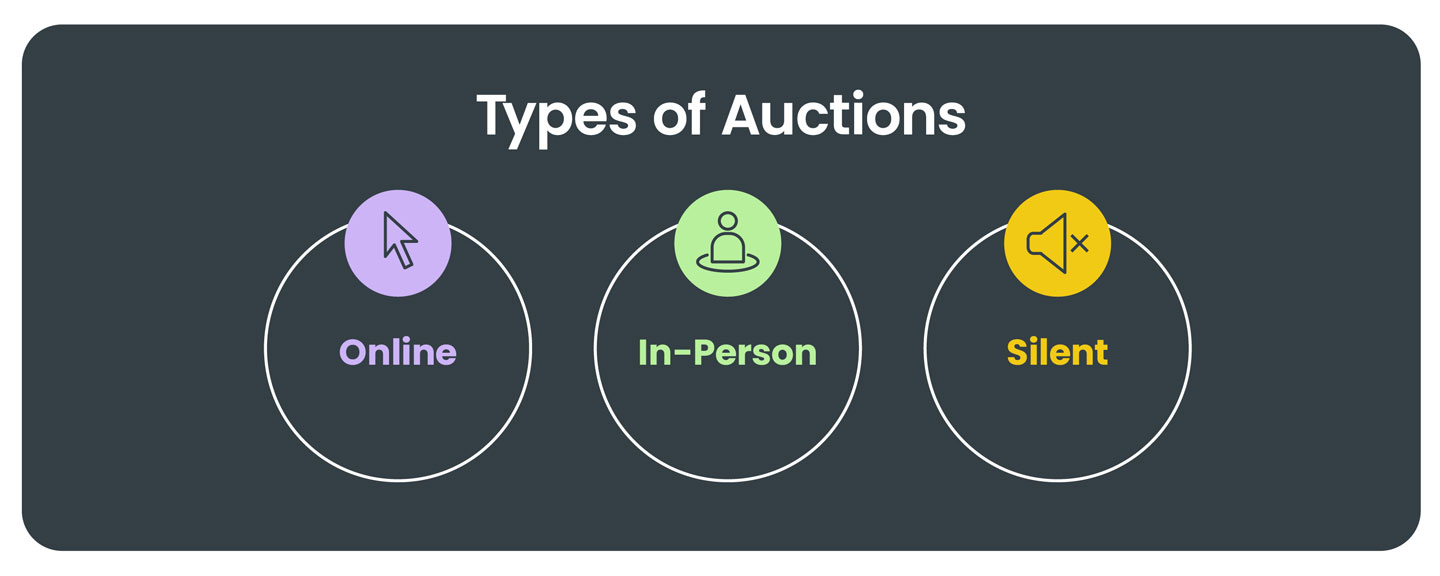
Auctions, while labor-intensive, are popular with nonprofits because they can raise significant funds while engaging and entertaining donors! There are three types of auctions: online, which is less labor-intensive, in-person, or silent. In the next chapter, we will cover creating a fundraising event plan, but we offer some tips specific to auctions.
Here’s a to-do list for planning a nonprofit auction:
Then think about donor retention. How can you keep attendees coming back? Here are five tips:
Auctions can seem intimidating, and they probably can be if they are large enough. If they're anchoring a big effort, like a capital campaign, it can seem like a lot of work. But getting things for free and selling them to help a nonprofit mission is pure genius, so don’t overlook this idea!
Obviously, this is a massive and general bucket, but it’s to lodge the idea in your brain that anything can be an event. We’ve talked about different ideas already, but there’s no limit to what your imagination can create.
When you’re short on fundraising ideas, here are some creative ways to get people together:
No matter what you choose, create a hashtag and publicize the event on social media. One of the most effective tools for getting the word out, social media for nonprofits is a powerful tool. Join the chorus and get your event in front of people!
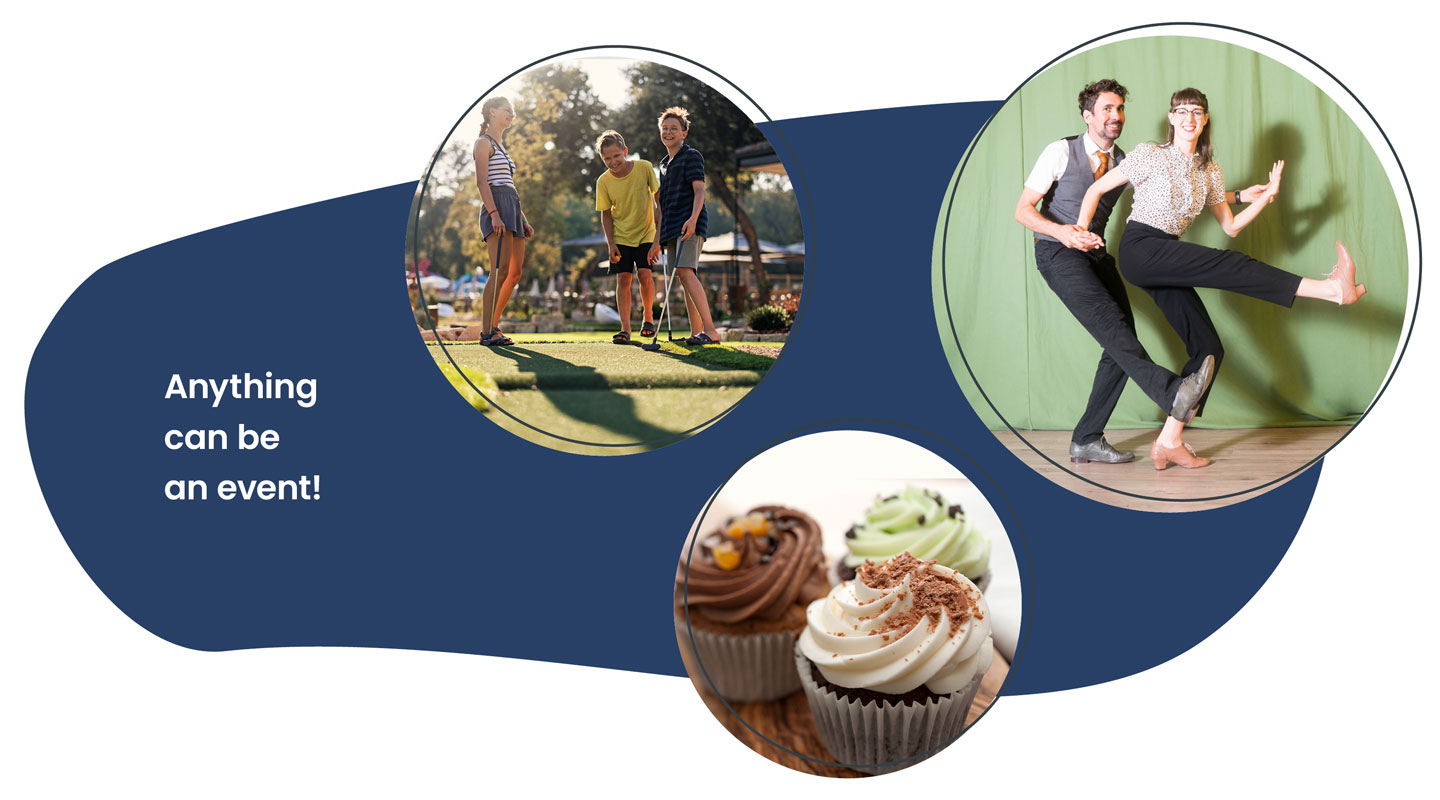
To round our big bucket of ideas, let’s think about how you can create fundraising events for nonprofits with a very specific twist.
For example, if you are a veteran’s organization, you can think of fundraisers that memorialize those lost or injured in combat. You can sell engraved bricks for a walkway, plaques to be affixed to benches, or trees that will be planted at your headquarters. Veterans often like walks and runs; it gets friends together, and there can be a special group of wounded veterans that participate together.
If you serve children, art-based fundraisers are wonderful ways the community can come together with those you serve. Ask children to draw pictures or design ornaments you can raffle. Plan a virtual concert or age-appropriate show and sell tickets.
If you’re a food bank, raffle a tour of your facility or dinner with your dynamic board. Partner with a supermarket, whether that means collecting unsold food or asking if you can designate an empty shopping cart to collect food donations.
One of our animal welfare clients, Rescue Village, offers Putts for Paws and Tails at Twilight as fundraisers. Of course, you can always plan a community dog wash or let donors sponsor pets if you don’t want to plan a gala. And our favorite idea? Enlist an online photo shop and sell a pet calendar featuring your most irresistible residents.
As you can see, there are plenty of ways you can use events to round out your fundraising plans. As long as they’re carefully thought-out and bring people together for a cause, the sky’s the limit.
This might be the most important chapter of this e-book, because no matter what kind of event you’re considering, creating an event plan is critical. Your event plan is your blueprint, and the other documents we suggest you consider round out all aspects of event planning.
If you are deliberate about creating a plan and diligent about recording how the event shapes up, you’ll have a map for next year’s event. There’s a saying: Measure twice, cut once. In terms of your event plan, it means take the time to do it right the first go-round and you will save yourself time in the future...and your event will keep getting better and better!
Before you put pen to paper or fingers to a keyboard, zoom out and look at how events figure into your overall fundraising plan. When you’re a smaller nonprofit, events are a great way to spread awareness about your mission and grow your list of supporters for future outreach. But if in-person events are 50% or more of your fundraising efforts, you’re putting way too many eggs in that basket. Events can be a little unpredictable (2020, anyone?), so we would recommend dialing that back a little and ensuring events are a part of, but not all of, your efforts.
We caution larger nonprofits to be strategic with events. They’re labor-intensive and can cost a nonprofit a lot in staff hours, which should be calculated into your profit when the event is over. If you’re in the red after an event, it wasn’t a success, even if it was a lot of fun.
A word of caution from our experience: Many nonprofits will engage volunteer teams for event planning. As a member of the staff or volunteer leadership, it is so important to eliminate obstacles to your team's success. At the end of the day, everyone's goal is to raise funds for your mission. Try not to micro-manage your volunteers or get lost in the details that aren't going to help you raise more funds.
One other pre-plan decision: what’s your ticket pricing model? Here’s a quick way to think of it:
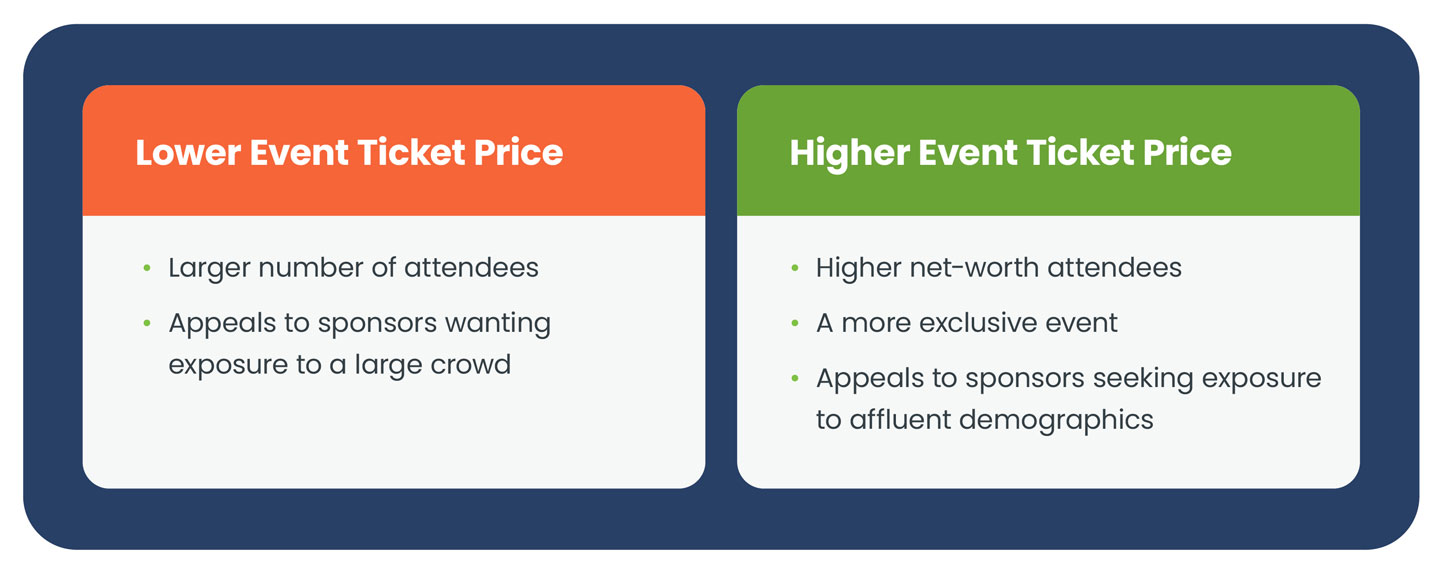
Let’s take a look at what goes into an event plan. Our downloadable toolkit includes a comprehensive template to get started. It will prompt you to think through, and document:
The specifics of what you want to track might differ, but a cloud-based spreadsheet that all team members can access is a tool critical for success.
That event plan isn’t the end of it, though. There are a few other foundational documents that will help you with your event.
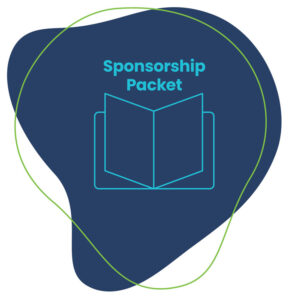
A sponsorship packet is really a marketing document. This information is designed to inform businesses of your mission and make event sponsorship irresistible!
When you take the time to create a sponsorship package, it can be quickly duplicated and distributed. Everyone gets the same document with the same terms, and everything remains transparent. You can certainly customize the packet for each business, but the guts of it shouldn’t change.
P.S. Having a document you can email someone saves a ton of time you’d spend on the phone or driving around town.
What goes in a sponsorship packet? Our event toolkit contains a Nonprofit Event Sponsorship Packet with a template that makes it easy. Just make a copy and build your packet right in the document using the prompts.
Here is a pretty standard list of what you want to include:
Okay, now you’re in good shape. What else? How about thinking through a list of board requirements? Yes, let’s put them to work. How can your board members help you? There are lots of ways. They’re likely unique to your board and your nonprofit, but here are some considerations:
Use your board! Their dedication to your nonprofit, community connections, and personal networks can spell success for your event.
One other plan to consider is a marketing plan. Put some thought into the best way you can publicize the event.
Here are some questions to answer:

Here's another we like to call taking advantage of the “FOMO Factor” – or Fear of Missing Out. If you want people to show up, you need to show them what they will miss if they don't attend.
Do you have any big names in the community or celebrities attending? Have them share a video testimonial about how excited they are to attend. If you're promoting an annual event, share photos of how much fun everyone had in past events. Use images to illustrate what a great time everyone had! Share photos of the decor, the band, the auction items, vendors (food), and get people thrilled to buy their tickets because they won't want to miss out. After the event, plaster photos all over your website and social media promoting the following year's date (or an invitation to join next year).
We could keep going, but you get the picture. Anything that markets your event should be determined, documented, and measured.
Our Nonprofit Event Toolkit has a terrific timeline you can copy and fill in with your own information.
Sponsors are the building blocks of an event. They get publicity and perks, like a fantastic table at your event, and you get chunks of your fundraising goal met.
You can find sponsors anywhere. They can be neighborhood or community leaders, corporate leaders, or even schools.
Remember your sponsorship packet? That’s going to be your calling card, but let’s back up a bit.
Start looking for sponsors anywhere from a year to six months before your event. You want to be able to bridge fiscal years and ensure there’s time for an approval process. A large company will allocate charitable donations in the budget, but once that money has been spent, there isn’t another line item until the next budget.
Starting your planning well in advance means there’s time to make the sponsorship match the corporate budget.
Once you have a list of potential sponsors, go to the “Sponsor List” tab in the event plan worksheet or in your CRM with a sponsor tag. Keep a current list of whom you’ve asked, when you’ve heard back, and what the sponsorship level is. This is also a handy spot to keep their website URL and logo, which you’ll need when creating the invitation and promo materials.
Your sponsorship packet comes into play here. If you have an extensive list of possible sponsors, use the “Internal POC” column to enter the name of the team or board member responsible for outreach and follow-up.
And remember, when looking for sponsors, think about corporate sponsors, community sponsors, in-kind sponsors, and individual sponsors. All types of supporters can help your event be a smashing success!
Let’s talk one more time about how event software for nonprofits can make everything about running an event easier. That includes promotion.
The smartest way to plan your promotional outreach is by segmenting your donors. In grouping by age, geographic location, etc., you can personalize your message, your calls to action, and even which auction items to highlight to entice donors to purchase tickets. Tickets to a Taylor Swift concert might appeal to some donors, while a ballet at the Kennedy Center might appeal to others (and if you procure those items for your auction, both will be a hit)!
Here are five ways you can market your event that won’t cost you a penny:
You can look into Google Ad Grants for free online advertising or ask your corporate sponsors if you can piggyback your advertising on their promotions. Ask anyone you see to help spread the word, and your efforts will show in ticket sales.
Volunteer management deserves its own chapter because when it comes to nonprofit events, volunteers actually do make the world go ‘round.
Why? They’re donating hours of time and effort, which are critical. But they’re also demonstrating a deep commitment to your nonprofit. This may turn into donations or a board seat. Even if it doesn’t, these are loyal supporters that you’ll be able to count on in the future.
So let’s assume you’ve got your nonprofit event all planned. You know the venue, you’ve figured out the logistics, and you want to focus on your volunteers. Smart!
Here are the five tips we suggest to make volunteer management a breeze:
Tip 1: Focus on your volunteer recruitment process. Come up with a plan that will help you recruit the volunteers that make the most sense for your organization. Then create a list of data points you’ll collect about the volunteers:
By building a recruitment process that collects the information you need to match the right volunteers to the right roles, you’ll save time and provide the volunteers with a great experience.
Tip 2: Spend time marketing volunteer opportunities. There are three simple steps we recommend:
Tip 3: Locate volunteer funding. This basically means free money! There are government grants, some of which are designated for volunteer programs within nonprofits. You must apply for the grants and provide evidence of the work your nonprofit does. A robust CRM can streamline the grant process and provide the evidence you need.
Tip 4: Let the software do the heavy lifting. Retire your spreadsheets! Invest in a CRM that can manage everything from shift scheduling to communications to volunteer follow-up. Technology can ensure notifications are shared with volunteers, and a good system will allow instant chat between volunteers and supervisors. Here’s how you can use technology to manage volunteers:
Tip 5: Don’t let this be goodbye! Follow up with your volunteers. We can’t stress enough that they are nonprofit gold. Here are three thoughtful ways you can make sure your volunteers feel appreciated:
Volunteer management isn’t hard if you separate it from the other event duties and focus on how you can find and nurture the best volunteers...and bring them back.
After you’ve swept up the confetti, literally or figuratively, are you done? Not quite. A nonprofit event is exhausting, time-consuming, EXHAUSTING, and worth every second of angst. So yes, you deserve a rest, but just run through this quick checklist to ensure you’re wrapping this whole thing up with a bow.
Before we let you go, let’s take a moment to talk about what you can do when you feel like donor engagement is getting wobbly. Perhaps you just finished a massive event, and everyone is tired. Perhaps there’s a recession. Perhaps there’s a pandemic. Almost anything can cause a little bit of donor fatigue! What can you do to combat that? We’ve got a few tips:
Remember, managing the donor journey is important for the success of your nonprofit. Re-engaging lapsed donors offers a wonderful opportunity to slow down and focus on building relationships.
Do you feel armed with what you need to run a spectacular event? Put in the time to plan well, and you’ll find that events are key to putting FUN into fundraising!
These companion worksheets walk you through every step of planning and executing an event. Just copy or download the toolkit and use it over and over, customizing the sheets so they fit your nonprofit perfectly.
Download the Free Toolkit